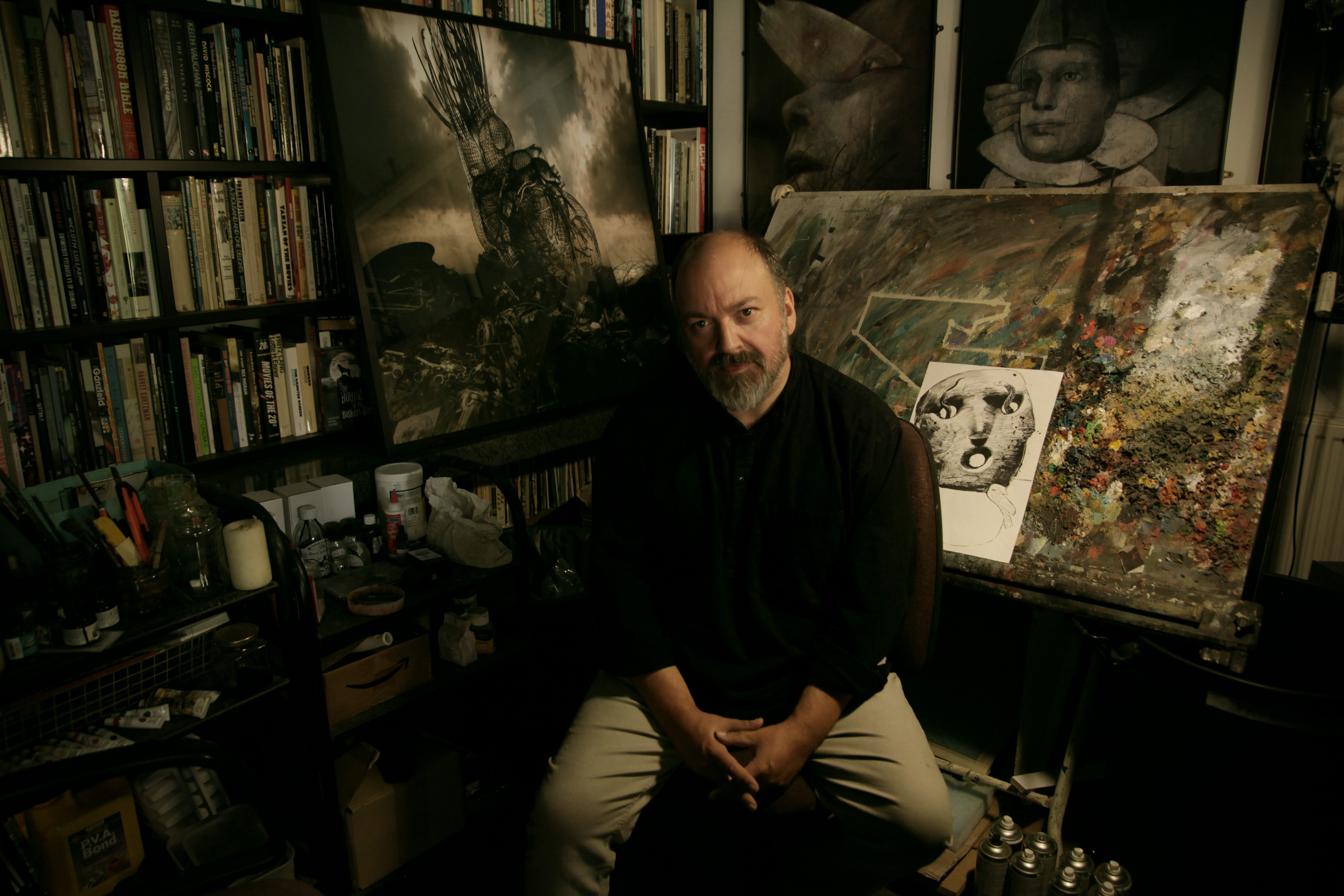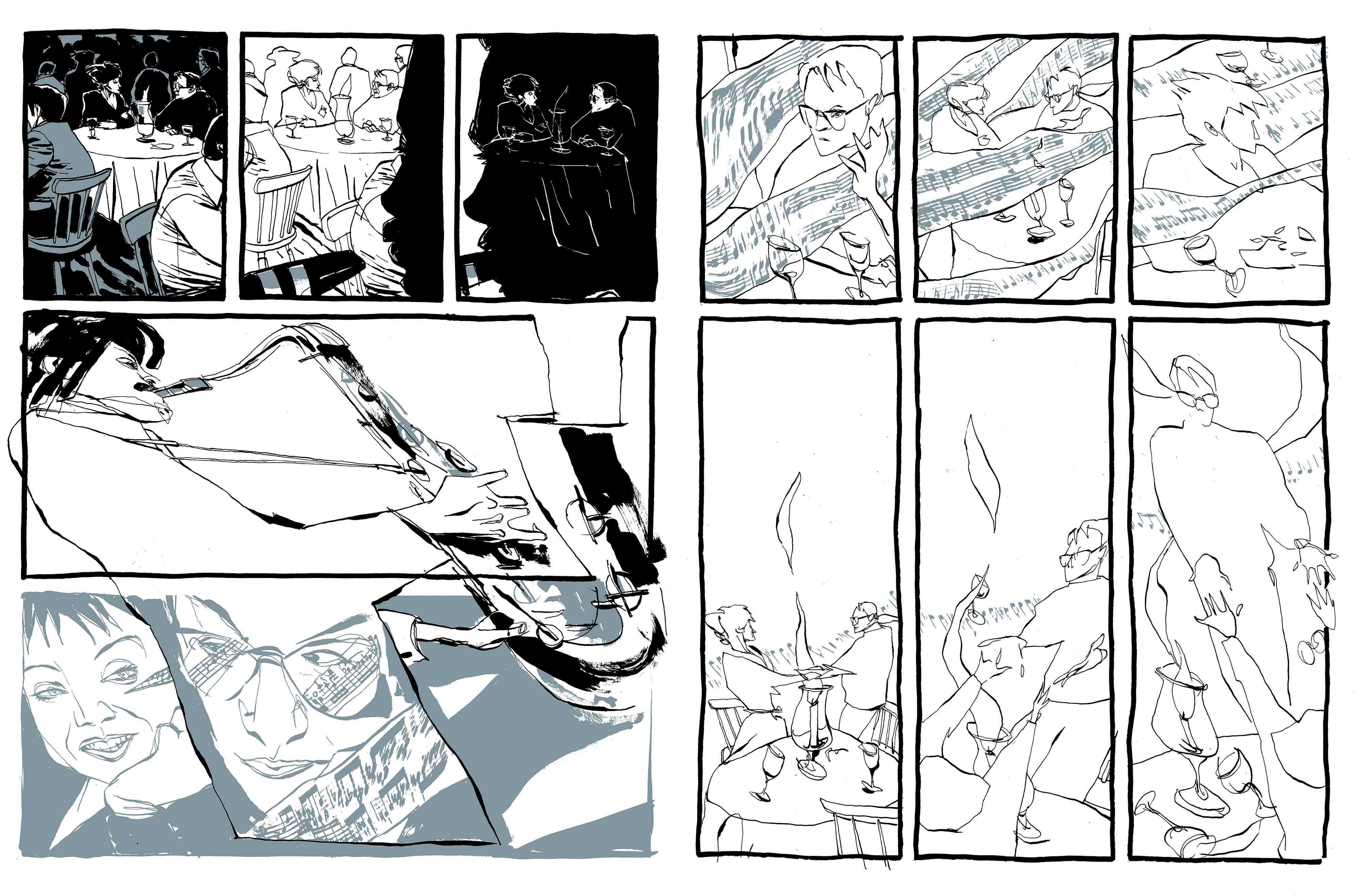“I was interested in creativity, it is my God as it were”
What we asked Dave McKean, comic creator, artist, musician and filmmaker
Dave McKean exploded onto the comics scene nearly forty years ago with Violent Cases, which he followed up with Black Orchid and the bestselling graphic novel Arkham Asylum. He has gone on to direct feature films, including Mirrormask, and create unique book cover designs. We caught up with him to discuss why he didn’t make more superhero comics, why he stopped working with Neil Gaiman, and how he ended up filming Michael Sheen in Port Talbot.
What is your official occupation?
I don't really have an official occupation. My unofficial occupation is a creative person. I'm an illustrator and artist and writer and occasional musician and filmmaker and photographer. Mostly storyteller, actually. Most of my work is about storytelling.
How did you come to work on Arkham Asylum in 1989? Had you worked with Grant Morrison before?
I had just started working for DC Comics, and I did a book with the writer that I started there with, Neil Gaiman. I had done some covers for Hellblazer, John Constantine. We finished up Black Orchid, and my editor at the time was Karen Berger. She sent me the script (for Arkham Asylum), and it was a dog-eared script. I think it had been through the hands of about 20 other illustrators who turned it down. I liked Grant, and I thought he seemed to be at a point in his career when he was looking for a bit more of a challenge than just doing a regular Batman comic. I'm not really a superhero fan. I didn't really get the superhero stuff. But I thought it was an interesting, kind of strange, symbolic... Alice in Wonderlandy, horror-y story. We had a lunch and talked over how we could move it around a bit, make it something a bit different.
You mention your personal feelings regarding superhero work. The book was very successful. Was there never any conversation about doing another superhero title?
There was a lot. But by the end of that year, I knew that I didn't want to do that anymore, apart from the fact that it's not my taste, those other books should be written by enthusiasts. They should be done by people who really love those characters and want to enjoy playing with them.
If you look at Arkham Asylum now, it's so obvious that I was trying not to draw Batman. Just draw a black shadow or something that looks somewhere between a bat and a man. I was trying to get out of the responsibility of drawing the superhero characters.
If you'll excuse me gushing for a moment, but Cages is one of my favourite graphic novels.
Oh, great. Thank you.
I was interested to see if it was possible to write about music in a comic, where there is no music.
Just an extraordinary piece of work. How would you describe Cages to someone?
Well, that was very much me coming to the end of Arkham Asylum and my two years doing books at DC. I carried on doing covers, but two years doing books at DC, trying to get off that ladder, onto the ladder that I felt I needed to be on. I was really interested in getting back to writing my own stories. In art school, I wrote all my own stories. It was odd for me to work with writers. I enjoyed it, but it wasn't what I was naturally interested in. I'm interested in real people, going through changes in their lives and what they believe in and falling in love and all that stuff. I wanted to do a book that was centred in all of the things I was fascinated with at the time. I liked observing the way that real people talk, not caricatures of people that you get in comics most of the time. The way people express themselves and their body language, and the way they start to say one thing and then sort of bail out halfway and lose track and go. And all those manners of speech. I didn't really see much of that in comics. I wanted to see that in a comic. I was interested in creativity, it is my God as it were, and what we believe in and what we don't believe in, but creativity is my belief. I wanted it to be about that and music. I was interested to see if it was possible to write about music in a comic, where there is no music.
There is an extraordinary sequence, for those who haven't read it, where a couple are talking and there is music playing, and they become the notes and time blends away.
There were two or three scenes where I was trying to do musical comics to see if that would work. And then falling in love and relationships and how that works. I just wanted to see some real people in a book. Also I got a bit tired with very densely illustrated full-colour pages, because although I thought there's no reason why a comic can't be made in any style from very complex, to the simplest of line drawings and everything in between, I did start to think that it slowed the storytelling down and I wanted to do something that was much lighter and easier across the page and your eye just starts to animate those characters across the page. It's a different attitude to it, really.
You mentioned getting back to writing yourself, but you do still do illustration work for other writers. Is there something in particular that will attract you to working with a writer?
If it's a living author like S.F. Said or David Almond, then it's obviously what they're writing, but also them. I enjoy working with them. They're great company. They're full of ideas. And most important, they love the collaboration. I understand when writers don't want to be illustrated, when they feel that they are conjuring the images in the words that they choose, and they don't want an illustrator coming in and making it literal. I think David and SF and Iain Sinclair and some of the others that I've worked with love that collaboration and love the fact that we come out with something that neither one of us would have done on our own, and it becomes another thing.
You mentioned living, because you have also done illustrations for more classic books. Does a publisher comes to you with a title, or is that you working with books you enjoy?
I love Alice in Wonderland. I want to work in that world. I did Gormanghast recently for the Folio Society, and they came to me with that one. They wanted to do a new edition and thought I'd be up for that. I did an edition of Dostoevsky's Crime and Punishment. That was my choice. That was a publisher called Beehive in America. My brief was the text had to be older than 100 years. I thought that was a really important book with a core theme and message at the centre of it that has not really been illustrated very much at all. I could only find one edition and I thought there was a lot of room for me to play there that had not been taken already. They're all different really. They come from different places.
How did you come to do the Heston Blumenthal cookbook?
He was putting together his first big cookbook from the Fat Duck. He loves Alice in Wonderland, and that children's picture book feel. He was interested in trying to get something of that into his first big book. We were at Bloomsbury Press. I had done some children's books there, and they showed my books to him, and he liked them. I went along for a meeting to see if we were compatible. I did a few samples of possible ways that illustration could be used in a cookbook, and we immediately clicked. It was one of those magical meetings where you find a soulmate.
Did you get to eat lots of food?
Well, the problem is that I'm a method illustrator. I have to eat the food to understand really what it's about. I've tried doing it other ways, but at the end of the day, you've just got to taste everything.
I commend your craft.
You've managed to direct movies. What was fascinating about Mirrormask is that the visual style of you is all over that. How did that come about?
Keep reading with a 7-day free trial
Subscribe to Kent Current to keep reading this post and get 7 days of free access to the full post archives.




